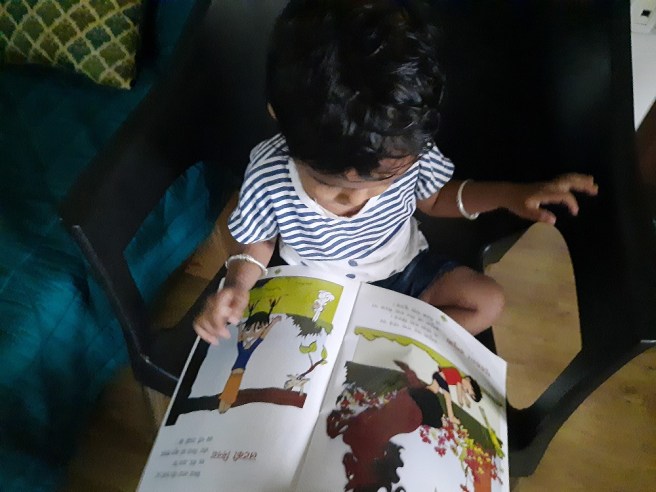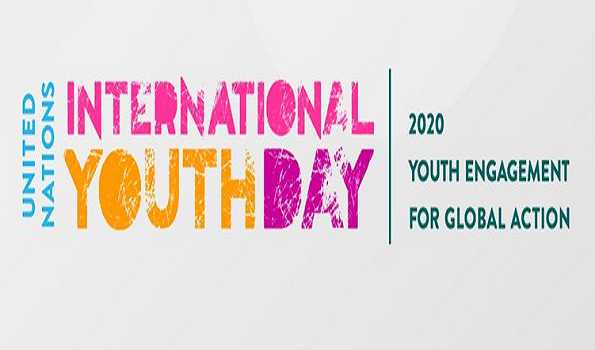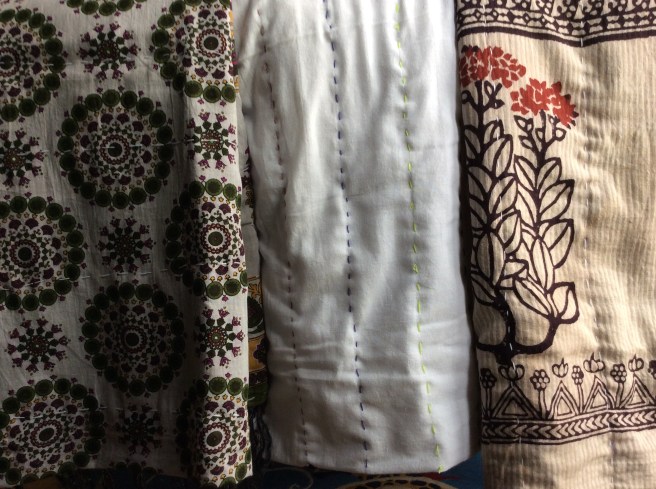The year was 1911. A young man set up practice as a District Pleader in Vadhwan Camp, in the erstwhile princely state of Bhavnagar in Saurashtra. His practice was doing well, he was gaining a name and earning too, but his heart was not in the machinations of legal matters.
In 1913, he became a father to a son. The advent of the child Narendra triggered the life mission which would launch him into a new role. The man was Gijubhai Badheka and his mission was to bring about a revolution in the field of child development and education.
Indian education during that time was a curious mixture of the Macaulayism as practised by the English rulers and the traditional “spare the rod and spoil the child” tenet. Narendra’s parents saw the sorry state of the local schools and were apprehensive about the kind of education their son would get. Gijubhai yearned for something different for his child, but was not able to visualise what this could be. So he started reading whatever he could find about education and educators. He also started sharing his anxiety and dilemmas with his friends.
One of these was friends was Darbarshri Gopaldas Desai, who visited Vadhwan Camp often. He told Gijubhai “If you want to read literature about children’s education, and see a new kind of school, go to Vaso and meet Motibhai Amin”. This was when the door opened for him. Gijubhai went to Vaso, met Motibhai and saw his school. He came back with many books; among which was a book describing the Montessori Method of education. This was Gijubhai’s introduction to the thinking of Maria Montessori, and her writing.
The more he read, the more deeply he started thinking about children and child development, and about putting the theory to practice. He also started experimenting with young Narendra, and sharing his observations with his friends, as also the ideas of Montessori. As his desire to spend more time and energy into this new challenge grew, the further he drifted from his legal practice.

That is where serendipity stepped in. In 1915, Gijubhai helped to frame the constitution of an educational institution in Bhavnagar called Dakshinamurti. Its founders were kindred spirits, all grappling with dilemmas about education, as well as reading the works of Montessori. This was the turning point. In 1916, at the age of 32, Gijubhai quit his legal practice, and joined Dakshinamurti, initially as Assistant Warden of the student’s hostel, and teaching in the High School. His direct interactions with students reinforced his conviction that if real change had to happen it was critical to start from early childhood. He put forth a proposal to the Board to start an experimental pre-school (Balmandir). His wish was granted and in 1920 the Dakshinamurti Balmandir started. This became Gijubhai’s karmabhoomi (the land where one works). And this is where he applied the Montessori philosophy and method, drawing upon the core beliefs and tenets about child development, while adapting the methods and techniques to suit the local realities.
In 1925 Gijubhai took on three major initiatives that created a revolution in the thinking and practice of children’s education across Gujarat.
He set up a formal Adhyapan Mandir to train young people in the philosophy and practice of pre-school education.
To spread the thinking and to attract larger interest in children’s education, the first Montessori Sammelan (Conference) was held at Dakshinamurti. It was chaired by Saraladevi Sarabhai, who had personal experience in using the Montessori system in educating her own children, and who had tremendous belief in this philosophy. The Sammelan concluded with the setting up of the Nutan Bal Shikshan Sangh, headed by Saraladevi Sarabhai to take the work ahead.
Gijubhai invited all citizens interested in the new children’s education approach to join. The enthusiastic support of these members helped spread the new wave not only across Gujarat, but also other parts of the country. The Sangh became a platform to carry this forward. It was proposed to publish a monthly Shikshan Patrika to give voice to the movement.
In 1926, the second Montessori Sammelan was held at Ahmedabad, presided by Gijubhai. Educationists came from all parts of India and carried back the Montessori message.
In the short period from 1920 when he embarked on his mission, till his death in 1939 at the age of 54 years Gijubhai not only pursued his passion for, and practice of his vision of pre-school education, but wrote prolifically for children, teachers and parents.
He combined the scientific perspective of an experimenter, the desire to do something new, the insight to draw out some light from the doldrums that the educational system was in, and faith. This was supported by the revelations from the writing of Madame Montessori.
Sadly the two great like-minded people never met in person. Madam Montessori first came to India in 1939, the year that Gijubhai passed away, at the invitation of Theosophical Society of India. She was then 69 years old. She made Adayar, Chennai her home and lived there along with her son, Mario till 1946.
By then seeds that her writing had sown had already taken root and spread, and Gijubhai was the gardener that nurtured the early shoots, and encouraged the branches to spread far and wide.
The Dakshinamurti Balmandir continues to function today, in its original building, one hundred years after it was first established.
It is necessary for the teacher to guide the child without letting him feel the pressure too much, so that she may be always ready to supply the desired help but may never be the obstacle between the child and his experience.
If we could say: “We are respectful and courteous in our dealings with children, we treat them as we would like to be treated ourselves” we should certainly have mastered a great educational principle and undoubtedly be setting an example for good education.
Dr. Montessori’s Own Handbook (1914)
A teacher’s work is like flowing water. …If we do not understand those who have to be educated; do not think about what they like and what they do not, then our work and theirs will go in vain. The fulfilment of the work of education is not in teaching one or two subjects nor preparing for a certain class, or passing matric or BA. Real education lies in making humans aware about their own unending strengths. It is to reveal the secret of how to animate these and how to use them. To do this requires that the strengths are respected. Their individual development needs to be given first place. Rather than being taught, they need to be guided onto the path of self-knowledge. This is the work of education today.
Gijubhai Badheka Note to Teachers circa 1920.
–Mamata

 The school showed amazing results. Soon the children exhibited great interest in working with puzzles, learning to prepare meals and clean their environment, were calm, orderly, self-regulating, and engaging in hands-on learning experiences—essentially teaching themselves.
The school showed amazing results. Soon the children exhibited great interest in working with puzzles, learning to prepare meals and clean their environment, were calm, orderly, self-regulating, and engaging in hands-on learning experiences—essentially teaching themselves.
 But I think this puts a greater and different responsibility on the Ministry of Women and Child Development—viz, the responsibility of educational inputs in the home environment for children below the age of 3. Ages 0-3 is when a baby’s brain grows to 80% of its adult size and is twice as active as adults. Research in developed countries has shown that at age 2, toddlers from low-income families are already 6 months behind in their language processing skills. Without greater investment in the first 3 years, many children will miss the opportunity to reach their full potential. And inputs and influences at this age come mainly from the home environment.
But I think this puts a greater and different responsibility on the Ministry of Women and Child Development—viz, the responsibility of educational inputs in the home environment for children below the age of 3. Ages 0-3 is when a baby’s brain grows to 80% of its adult size and is twice as active as adults. Research in developed countries has shown that at age 2, toddlers from low-income families are already 6 months behind in their language processing skills. Without greater investment in the first 3 years, many children will miss the opportunity to reach their full potential. And inputs and influences at this age come mainly from the home environment.


 So I thought I would turn these into baby quilts. My interpretation of
So I thought I would turn these into baby quilts. My interpretation of